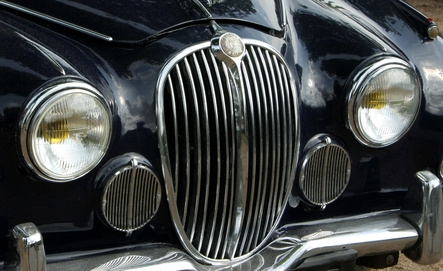
With advances in alternative fuel technology even at just a conceptual stage, Jaguar is readying itself for a future line of cars that can use a broad range of fuels. The flexibility of fuel choices is a brave new step in automobiles, where an internal combustion engine frequently limits a car owner to one choice: gasoline. As of 2011, some Jaguar models offer diesel and ethanol-based fuel options as well as gasoline.
The standard fuel for Jaguar automobiles is gasoline. U.S. Jaguar X-Type models should use premium unleaded gasoline with octane levels of 91 or higher. Any lower than this could result in sluggish performance and possible voiding of the warranty.
Diesel is a fuel option for some models of Jaguar. The Jaguar model XF has two out of five possible engine types that run on diesel: the 3.0-liter V-6 Diesel for the XF with 177 kilowatts of power and the 3.0-liter V-6 Diesel S for high performance at 202 kW. Another diesel engine is offered in Jaguar XJ Premium Luxury and XJ Portfolio models, which boasts 202 kW performance in a 3.0-liter AJ-V6D Gen III diesel engine.
The gas micro-turbines of Jaguar's concept car, the C-X75, unveiled in fall of 2010, allow this hybrid electric car to be run on a variety of fuels, including biodiesel. Other fuel options include diesel, compressed natural gas and liquid petroleum gas. These fuels can be used with little or no modification and offer greater versatility over gasoline internal combustion engines, which cannot use diesel or other fuels.
Jaguar cars manufactured from 1992 onward should be compatible with E10 gasoline, or gasoline that may contain up to 10 percent ethanol. This poises the Jaguar to be ready for the European Fuel Quality Directive's introduction of a new E10 across the European Union that began in January 2011.
The Jaguar C-X75, in addition to the gas micro-turbines, is fueled by a lithium ion battery pack. This can last for 68 miles on a full charge. Unlike regular hybrids that use braking power to generate electricity to charge the battery, the twin gas turbines help to charge the battery and extend the total range to 560 miles. Because the turbines reach their optimum operating speed quickly, short bursts can recharge the batteries without detriment to fuel consumption or battery life cycle. The battery plus turbine combination also is less dependent on power grids than are fully electric vehicles. The propulsion system of the C-X75 determines whether the turbines will work in sequence or together to charge the battery or power the electric motors directly.